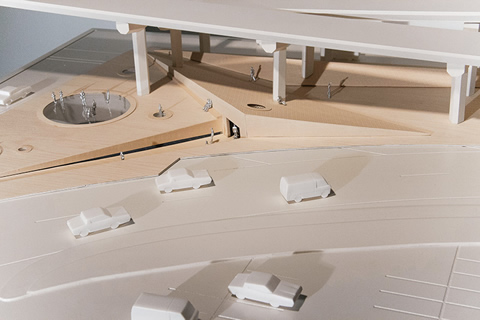In recent years, a cottage industry has sprung up to invent uses for the space underneath Toronto’s much-maligned Gardiner Expressway: Underpass Park now attracts skateboarders and graffiti artists to an eastern section, while the Fort York Visitor Centre has brightened a stretch in the west.
Sonja Tijanic, a recent graduate of the Daniels Faculty, has her own novel idea for enlivening the Gardiner’s underside. For her master’s thesis, Tijanic imagined four kinds of theatrical spaces at different spots along the expressway. She designed each to be usable for performances or art installations, such as during Scotiabank Nuit Blanche, and to be open to the public at other times.
The project is about creating a new use for a derelict space, says Laura Miller, a Daniels professor who was Tijanic’s adviser, and making a landscape more inviting – using lighting, seating and other elements to create a place where people will linger instead of rushing through or avoiding altogether.
Miller likes giving her students real-world urban design problems. Last year, as part of the T.O. Superstudio course she teaches at the Daniels Faculty, students were asked to reimagine the Allen Expressway. One came up with a bold proposal to build an athlete’s village and flood part of the site to use as a rowing venue for an anticipated 2028 Olympic bid. Another focused on food and transit, designing the area as a hub for both. In previous years, Miller has asked her students to consider the Dufferin Mall. She intentionally chooses sites that, she says, give students the opportunity to “make a better city.”
T.O. Superstudio is open to graduate students in architecture, landscape design and urban design. This cross-disciplinary openness exposes students “to the diverse demands of their profession,” says Miller. The students’ designs also might inspire city planners to expand their own ideas about what Toronto could be.
Recent Posts
U of T’s 197th Birthday Quiz
Test your knowledge of all things U of T in honour of the university’s 197th anniversary on March 15!
Are Cold Plunges Good for You?
Research suggests they are, in three ways
Work Has Changed. So Have the Qualities of Good Leadership
Rapid shifts in everything from technology to employee expectations are pressuring leaders to constantly adapt






